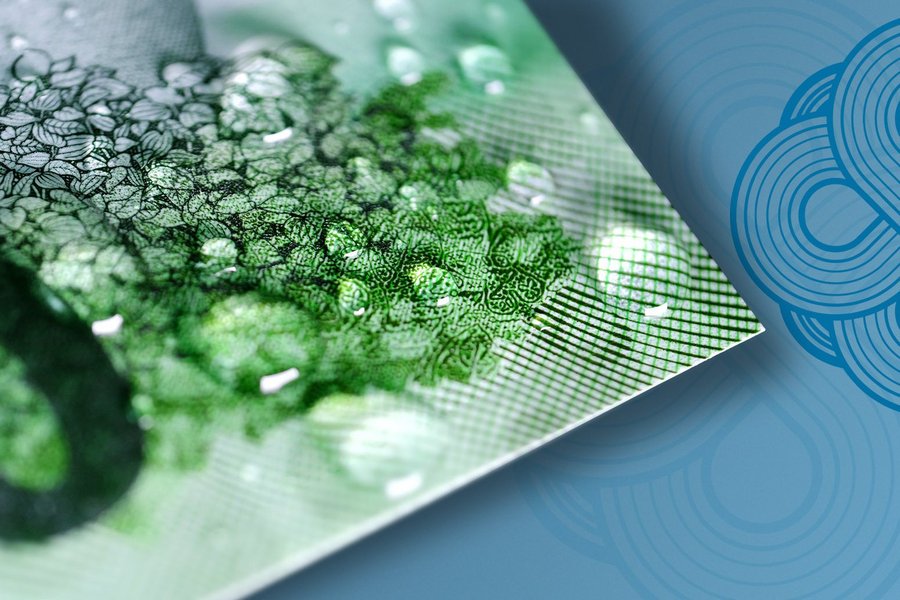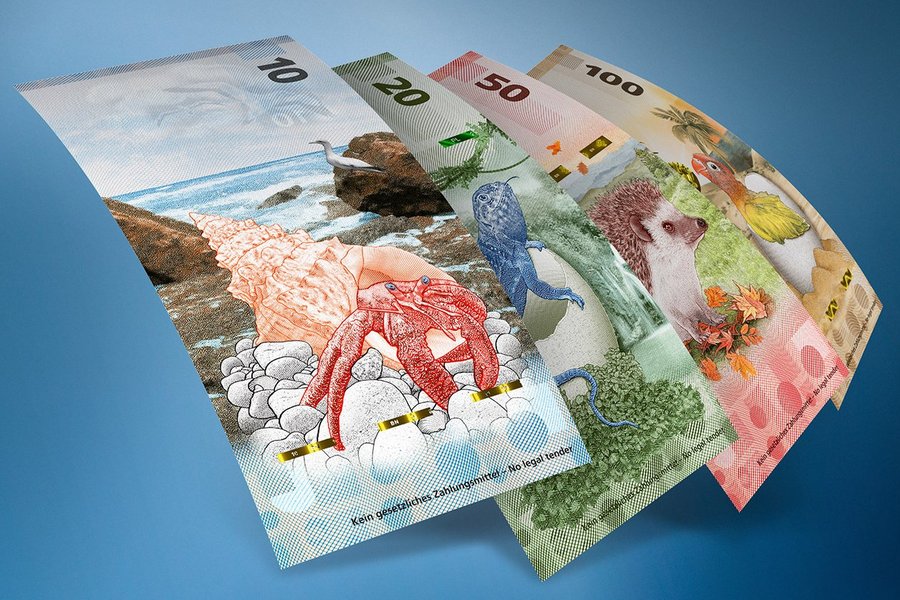Published: 11/06/2024

Revolutionizing a green end-of-life solution for banknotes
Despite the rise in digital payments, the attraction of physical cash remains strong. In fact, there is more cash in circulation now than ever before, driving a substantial need for innovative solutions for the repurposing of banknotes as they reach the end of their useful lives.
Every year, countless banknotes reach the end of their useful lives. They may be damaged, phased out as a result of a banknote redesign, or part of an upgrade to a more fraud-resistant series. Whatever the reason, those many billions of banknotes need to be taken out of the cash cycle – effectively and securely. Almost universally today, that is accomplished through a process of ultra-fine shredding, followed by the compression of the resulting material into briquettes or bags, or within compacting containers.
For many years, central banks and printworks have perceived this material as a recycling challenge, but also one that presents a large – if latent – opportunity. It has already given rise to many innovative ways of sustainably disposing of shredded banknotes. Some batches undergo a composting treatment to create agricultural soil improvers; others are used in energy recovery facilities to generate electricity; still others end up in industrial settings, such as firing ceramics kilns.
Finding a comprehensive solution to the repurposing of banknotes at the end of their life cycle has proved challenging, yet it’s an intriguing puzzle that many central banks and printworks are eager to solve.
This challenge has inspired G+D on a voyage of discovery to find a new approach to repurpose both cotton-based and hybrid banknotes in a wholly sustainable way – and it’s a challenge that has resulted in identifying a breakthrough technology for the cash cycle called banknote fiber extraction.

Game-changing innovation to the cash cycle
“Banknote fiber extraction can be a sustainability game-changer for the entire currency industry,” says Ferdinand Storek, Head of Cash Life Cycle Solutions at G+D. “It decomposes banknotes while maintaining the integrity of the underlying cotton and cellulose fibers.”
To ensure a high level of security, today’s conventional banknote destruction systems have to cut banknotes into extremely small shreds, which shortens the underlying cotton fibers. That means they can no longer form the stable mesh that gives cotton its unique properties. This greatly limits the possibilities of easily and economically transforming unfit banknotes into another usable material.
In contrast, banknote fiber extraction decomposes banknotes using a revolutionary process that leaves the cotton, as well as cellulose fibers, largely intact. In doing so, efficiency as well as security can further be enhanced.
“It’s a world-first opportunity to fully repurpose organic material generated out of unfit cotton-based banknotes.“
Head of Cash Life Cycle Solutions, G+D
G+D’s solution, Banknote Fiber Extractor, uses a high-tech turbo mill to create air turbulences and vortexes that tear banknotes into tiny particles while maintaining the integrity of underlying cotton and cellulose fibers. Recovered fiber material can then be repurposed into a variety of everyday products, from typical paper making to fiber-injection molding to even newly created products, such as packaging solutions.
“It’s a world-first opportunity to fully repurpose organic material generated out of unfit cotton-based banknotes,” says Storek. “In other words, central banks and printworks receive the intact fibers of the securely decomposed banknotes, which can then be fully recycled.”
Banknote fiber extraction: Advancing a sustainable process for decomposing banknotes
- A high-tech turbo mill applies pressure-shear stresses, intense accelerations, air turbulences, and vortexes to tear banknotes apart, securely decomposing them into fibers that are fully reusable.
- The technology is designed to cope with several different feeding formats: sheets, bundles, boxes, packs, loose banknotes, or shreds.
- Processing can be applied to both fully cotton-based and hybrid banknotes.
Supporting the sustainability agendas of central banks
The repurposing approach could make a highly positive – and demonstrable – contribution to the sustainability agendas of many central banks and printworks. “More and more central banks are seeking holistic solutions that fulfill their sustainability goals,” says Storek. “The introduction of innovative repurposing concepts helps to achieve that, both in terms of further greening the cash cycle and supporting their overall sustainability targets.”
By generating a fully reusable raw material, banknote fiber extraction also presents central banks and printworks with a promising business case for optimizing a key part of their cost structure. “Usually when you destroy banknotes and want to somehow repurpose the result, you need to ship the material to a third party who will process it and make it reusable,” says Storek. “Banknote fiber extraction can completely change the way central banks manage banknotes at the end of their lives. The output is 100% ready to be recycled into new paper products like paper bags or packaging solutions used by logistic companies.”

Exploring the potential of banknote fiber extraction
Banknote fiber extraction has already revealed a wide range of benefits:
- New level of efficiency in recycling: The fiber material is efficiently generated during the banknote decomposing process. So it is immediately ready for repurposing, with no third party or additional process steps required.
- Build to integrate: G+D’s Banknote Fiber Extractor can be seamlessly integrated into existing destruction processes.
- Higher level of security: The particles generated by the Banknote Fiber Extractor are up to 1,500 times smaller than the current standard produced by high-security shredding (DIN 66399 P-5 or P-4), making the output both recyclable and highly secure.
- Engineered for high availability: The new fiber extraction solution has been engineered for low maintenance, ensuring a high level of system availability.
- Plastic reduction: The extracted fiber material can be compressed into briquettes without the need for plastic wrapping/bagging for storage, as it’s ready for reuse.
Integrating banknote fiber extraction into a sustainable cash cycle
The introduction of banknote fiber extraction represents another major milestone in G+D’s mission to work toward a greener cash cycle that considers sustainability at every stage. That already extends from the use of textile industry cotton combing waste (coils), organically grown cotton, and eco-friendly inks in banknote production through to the use of reusable trays at key points in the cash processing cycle.
Until now, the end-of-life stage of banknotes has presented a particularly tough challenge. Despite the presence of numerous options, a universally applicable standard for repurposing banknotes has not yet been established. With its revolutionary capabilities, banknote fiber extraction is signaling a potential future direction for such a standard.
Key takeaways
- Banknote fiber extraction is a new innovative and sustainable way to securely decompose both cotton-based and hybrid banknotes.
- Everyday products such as paper and packaging can be produced from the recovered banknote fibers.
- The proposition could make a highly positive – and demonstrable – contribution to the sustainability agendas of many central banks and their printworks partners.
Share this article
Subscribe to our newsletter
Don’t miss out on the latest articles in G+D SPOTLIGHT: by subscribing to our newsletter, you’ll be kept up to date on latest trends, ideas, and technical innovations – straight to your inbox every month.


